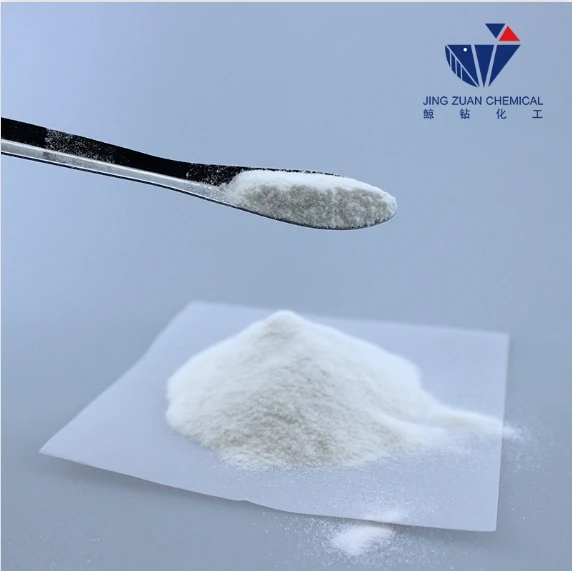
Nov . 12, 2024 07:05 Back to list
hydroxyethylcellulose powder
The Versatile World of Hydroxyethylcellulose Powder
Hydroxyethylcellulose (HEC) powder is a remarkable material that has found extensive use in various industries due to its unique properties. As a non-ionic, water-soluble polymer derived from cellulose, HEC offers excellent thickening, emulsifying, and film-forming characteristics, making it a versatile ingredient in products ranging from cosmetics to construction materials.
Properties of Hydroxyethylcellulose
HEC is classified as a cellulose ether, which means it is created through the modification of cellulose, a natural polymer found in plant cell walls. Its primary characteristic is its ability to dissolve in water, forming a viscous solution that can enhance the texture and stability of various formulations. The degree of substitution of the hydroxyethyl groups on the cellulose backbone significantly influences its solubility and viscosity properties.
One of the defining features of HEC powder is its thickening capability. This makes it an invaluable ingredient in many applications. For instance, when incorporated into personal care products such as shampoos, lotions, and gels, HEC improves the product's flow and spreadability, ensuring a pleasant user experience. Moreover, it has the ability to retain moisture, thus providing hydration to the skin.
Applications in Various Industries
1. Cosmetic and Personal Care Industry In cosmetics, HEC is commonly used in formulations for shampoos, conditioners, lotions, and creams. Its ability to create a smooth texture and retain moisture enhances the overall quality of personal care products. Additionally, HEC acts as a stabilizer, preventing the separation of oil and water phases in emulsions and ensuring that products maintain their intended consistency over time.
2. Pharmaceuticals Hydroxyethylcellulose is also a crucial ingredient in the pharmaceutical industry. It is used as a thickening agent in topical formulations, such as gels and ointments, providing controlled release of active ingredients. Its biocompatibility makes it suitable for use in drug delivery systems, where it aids in the stabilization and solubilization of pharmaceuticals.
hydroxyethylcellulose powder

3. Food Industry In the food sector, HEC can serve as a thickener and stabilizer in sauces, dressings, and dairy products. Its ability to improve texture and mouthfeel enhances the sensory experience of food products. Importantly, HEC is recognized as safe for consumption and is included in various food applications.
4. Construction and Building Materials Beyond personal care and food, HEC proves its versatility in the construction industry, where it is used in cement and plaster mixes. Its inclusion improves the workability of mortars, facilitating better adhesion and water retention, which is critical for effective curing. The use of HEC in construction materials also contributes to a reduction in cracking and improves durability.
5. Agriculture HEC is utilized in agriculture as a soil conditioner and stabilizer in various formulations, including fertilizers and herbicides. Its water-retaining properties enhance soil moisture levels, leading to improved plant growth and yield.
Environmental Benefits
As a derivative of cellulose, HEC is biodegradable and environmentally friendly. Its renewable source ensures that its production has a lower environmental footprint compared to synthetic polymers. Additionally, HEC’s versatility allows companies to create products that minimize waste by optimizing formulation stability and efficiency.
Conclusion
In conclusion, hydroxyethylcellulose powder is a multifunctional ingredient that plays a significant role across various industries. Its unique properties make it an essential component in cosmetics, pharmaceuticals, food products, construction materials, and agricultural applications. As consumers increasingly seek products that are efficient and environmentally friendly, HEC stands out as a sustainable choice that meets both consumer demands and industry requirements.
The future of HEC powder appears promising, with ongoing research and development aimed at expanding its applications and enhancing its properties. Companies consistently explore innovative ways to leverage the benefits of HEC, ensuring its relevance in an ever-evolving market. With its wide-ranging benefits, hydroxyethylcellulose is undeniably a cornerstone of modern formulations, valued for both its functionality and sustainability.
-
Versatile Hpmc Uses in Different Industries
NewsJun.19,2025
-
Redispersible Powder's Role in Enhancing Durability of Construction Products
NewsJun.19,2025
-
Hydroxyethyl Cellulose Applications Driving Green Industrial Processes
NewsJun.19,2025
-
Exploring Different Redispersible Polymer Powder
NewsJun.19,2025
-
Choosing the Right Mortar Bonding Agent
NewsJun.19,2025
-
Applications and Significance of China Hpmc in Modern Industries
NewsJun.19,2025







